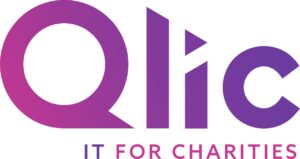
Technology is moving fast, and the nonprofit sector is undergoing a hasty digital transformation. From small charities to large NGOs, organisations are under growing pressure to innovate, improve services, and meet rising digital expectations. These days, innovation and technology are no longer optional; they are critical for mission delivery and long-term sustainability.
That’s why having a clear IT roadmap matters. But with limited budgets and stretched teams, it’s no surprise that nonprofit leaders often prioritise immediate needs over long-term planning. The question is: Do you really need a 5-year IT roadmap, or is it too rigid for a sector that needs to stay agile?
In this blog, we’ll explore what an IT roadmap is, when it’s helpful (or not), and how to build one that’s reasonable for your organisation, regardless of size or budget.
What Is an IT Roadmap for Nonprofits?
A digital technology roadmap is a tactical roadmap tool that outlines how your nonprofit will use technology to achieve its business goals over time. It maps your current digital infrastructure, identifies gaps, and sets out a timeline for recovery across your IT infrastructure, systems, data, and security.
A roadmap links technology strategies directly to your mission outcomes, ensuring that every decision is purpose-driven. It also helps schedule IT audits, security checks, and system reviews, so your organisation stays safe and up to date. Most of all, it helps illustrate to funders, finance departments and stakeholders how investing in technology will help the charity achieve its mission.
Unlike corporate IT roadmaps, which are often driven by profit and backed by larger budgets, nonprofit IT strategies must be realistic, mission-aligned, and mindful of limitations. That’s where a thoughtful, tailored roadmap becomes invaluable.
Building Blocks: Key Components of a Nonprofit IT Roadmap
A comprehensive IT roadmap for a nonprofit typically includes several key elements that address the organisation’s technology needs and strategic goals and direction. The roadmap should outline:
Infrastructure
The infrastructure component involves a thorough overview of the nonprofit’s existing technology setup. This includes your hardware, network, and cloud setup. Are your laptops, servers, and routers still fit for purpose? Do you need to upgrade or migrate to the cloud to support hybrid working or increase storage?
Looking after your infrastructure ensures you have solid and secure foundations that allows you scale your business if necessary. This approach helps you avoid last-minute replacements and promotes smarter, phased investments.
Software
Take stock of the systems your charity uses, such as CRMs, fundraising tools, finance software, volunteer platforms, and more. Are they integrated efficiently and straightforward to use?
Your roadmap should also highlight plans for adopting new software solutions, upgrading existing ones, and integrating different software systems to streamline workflows and improve efficiency. The IT roadmap should clearly outline a strategy for transitioning to new solutions that better align with the nonprofit’s evolving business objectives.
Security
Given the rise in cyber threats, cybersecurity for nonprofits is non-negotiable, as they handle sensitive donor and beneficiary data. A well-design IT roadmap should include plans for mplementing strong cybersecurity measures, such as antivirus protection, multi-factor authentication, regular cybersecurity audits, ensuring compliance with data regulations like GDPR.
Security shouldn’t be reactive; it should be built into your long-term strategy. By planning a detailed IT project roadmap your charity will be better equipped to prevent and anticipate threats before they happen. This proactive approach not only prevents costly breaches but also builds trust with stakeholders.
Data Management
Data management and analytics have become increasingly important for nonprofits to make informed decision and implement their strategic plans. Have you ever wondered how is data collected, stored, and used in your organisation? Your roadmap should outline how your charity manages mission-critical data, support better data hygiene, storage, and analytics, so you can make smarter decisions and create stronger impact reports.

The Essential Benefits of IT Roadmaps for Nonprofits
So, why should a nonprofit invest time and money in creating a roadmap? Here are some of the most beneficial uses:
Improved Communication and Visibility
A shared roadmap raises transparency and coordination across departments in your charity. From leadership to tech teams and finance, everyone gains visibility into current and upcoming projects. Ensuring a better visibility of an organisation technology plan, ensures alignment among team members, reduces silos, and guarantees that everyone, including your stakeholders, understands how tech supports your mission.
Better and More Sustainable Tech Budgets
Many nonprofits have to deal with tight and unpredictable budgets, so it’s important to know what resources will be necessary in future, including for digital transformation and technology. A roadmap helps forecast tech needs and plan sustainable, gradual investments. It’s easier to justify costs to boards and funders when there’s a clear plan linked to a specific impact. Adopting an IT roadmap, not only facilitates the development of realistic, short term and long term technology budgets, but also company budgets.
Strategic Alignment with Organisational Goals
Technology should never be adopted just for the sake of it. A roadmap ensures every investment serves a pruprose and is tied to a strategic objective and overall vision, whether that’s implementing internal operations, scaling services, or boosting donors engagement. With a technology roadmap, it’s clear what you have to do and why, while IT priorities are based on budget and mission
Address Technical Debt
Outdated systems can sink resources and expose nonprofits vulnerabilities. An IT roadmap can help implement charities hardware lifecycle and plan hardware replacements more efficiently. It can help to map out innovation needs and identify and phase out legacy tools, modernise the IT infrastructure, and reduce inefficiencies, potentially saving costs in the long run.
Enhance Fundraising and Volunteer Management
A roadmap can be a valuable ally in fundraising and volunteer management, by helping you identify and implement more efficient fundraising processes, new technologies like AI for fundraising, blockchain donation platforms and Microsoft fundraising software, which offers strong fundraising capabilities tailored for nonprofits.
In volunteer management, an IT roadmap can guide the adoption of systems that improve the understanding of volunteer skillsets, enhance volunteer engagement and retention, and lead to more efficient coordination of volunteer activities.
Enhanced Cybersecurity
Cyber threats are increasing, and nonprofits are often targeted. An IT roadmap helps ensure your charity has its guard up and has a proactive security strategy, scheduling regular cybersecurity audits, reviewing software protection, and guaranteeing staff are trained and systems compliant.
Improve Your IT Sustainability
Sustainability isn’t just about being green; it’s about long-term resilience. A roadmap helps identify where you can reduce energy use, inefficiencies, implement IT sustainable practices, and comply with environmental regulations. For example, an IT roadmap can highlight software and changes your charity would need to be more sustainable, like for example, Microsoft’s for Sustainability for Nonprofits, which offers tools to track and shrink your digital carbon footprint.
Is Five Years Too Long? Choosing the Right Roadmap Horizon
Is a 5-year IT roadmap the right approach for every nonprofit? First of all, it’s important to consider the unique context of each nonprofit, from IT infrastructure to budget and mission.
A 5-year IT roadmap offers evident advantages, especially for larger charities with later budgets, planning complex infrastructure upgrades, system integrations, or long-term fundraising campaigns. It provides strategic continuity and ensures digital goals are aligned with broader organisational strategies.
However, technology evolves fast. A rigid five-year plan can become quicky outdated if not regularly reviewed. If you decide to go for a 5-year IT plan, make sure you review and update your roadmap every year.
For many smaller nonprofits, a 2–3-year roadmap with more frequent check-ins may be more practical and adaptable.
Your roadmap horizon should reflect:
- Your organisation’s size and structure
- The current state of your IT systems
- Available budget and funding predictability
- The pace of change in your operating environment
There’s no one-size-fits-all answer, but flexibility, relevance, alignment with your mission are fundamental.
Final Thoughts
IT roadmaps are undeniably valuable tools for nonprofit organisations. They provide a strategic framework for aligning technology investments and plan resources allocation with the organisation’s mission and goals.
Regardless of the specific horizon, embracing strategic technology planning and track the progress of the actions outlined in the iT roadmap is essential for all nonprofits to ensure they are leveraging technology effectively to achieve their mission.
Partnering with an experienced IT provider like Qlic can help turn your roadmap into reality. We have been working in the third-sector for years, helping charities assess current systems, create tailored roadmaps, and implement IT solutions that support long-term success. Explore our charity case studies to see how we’ve supported charities just like yours.
Get in Touch
Want to know how to Implement your IT roadmap faster? Get in touch with the team at Qlic here.






